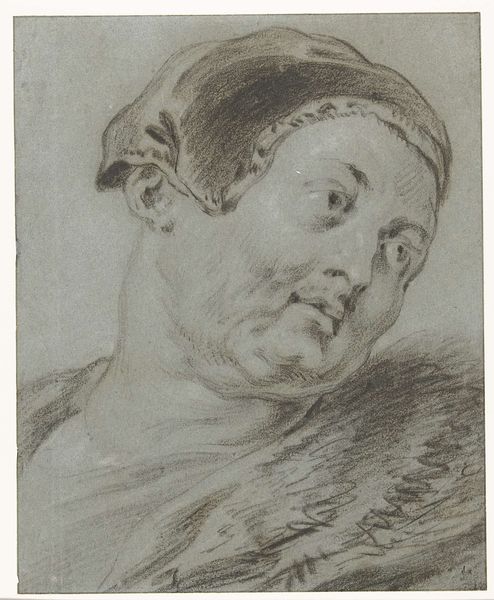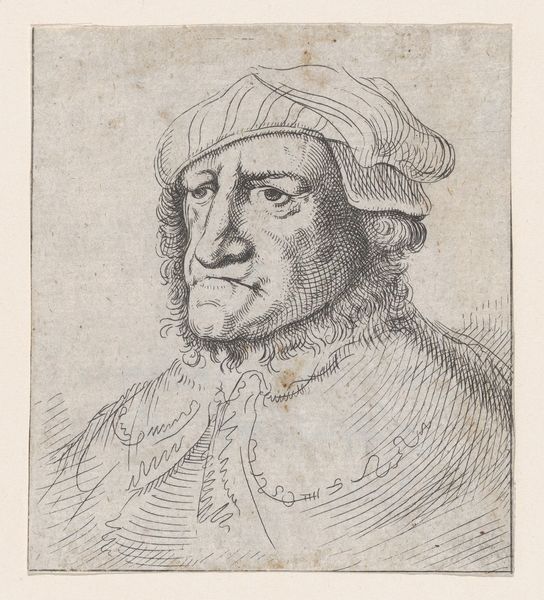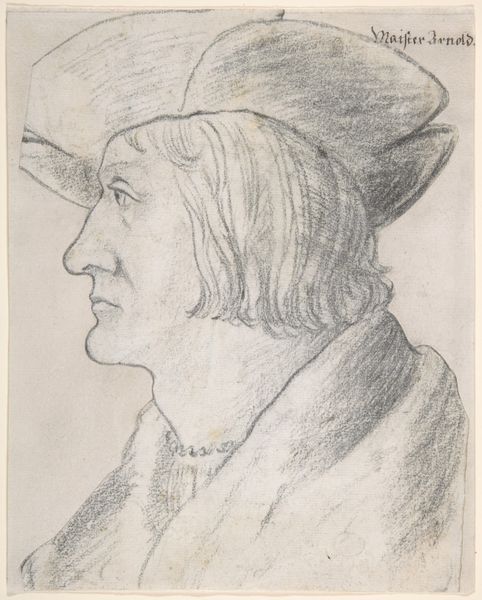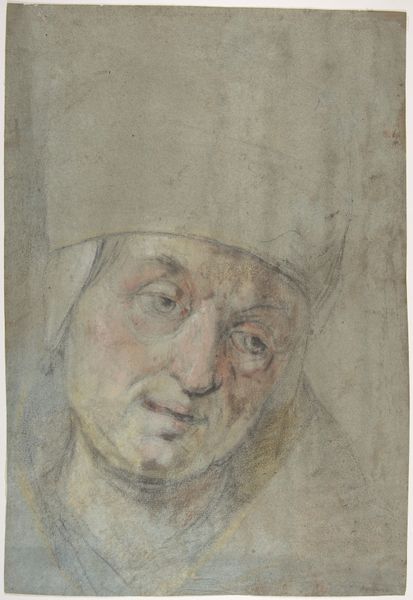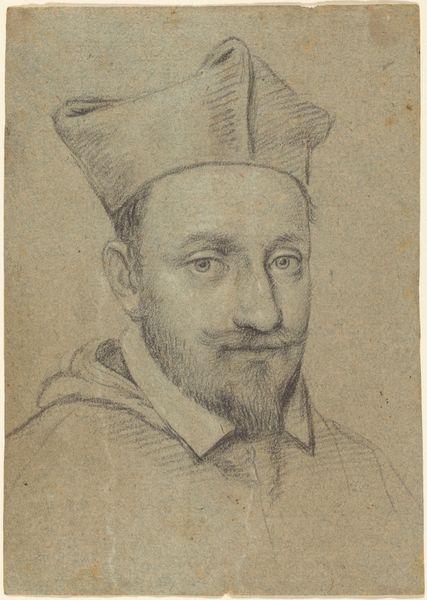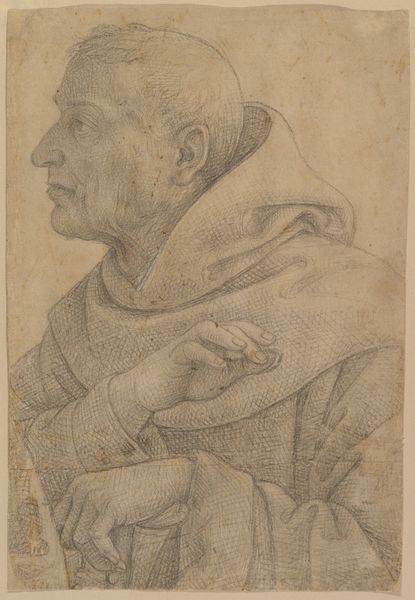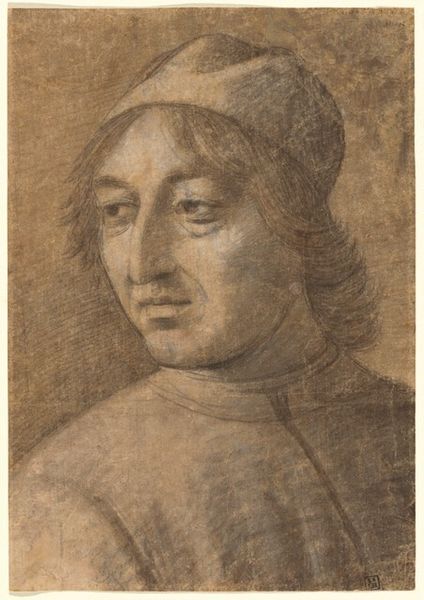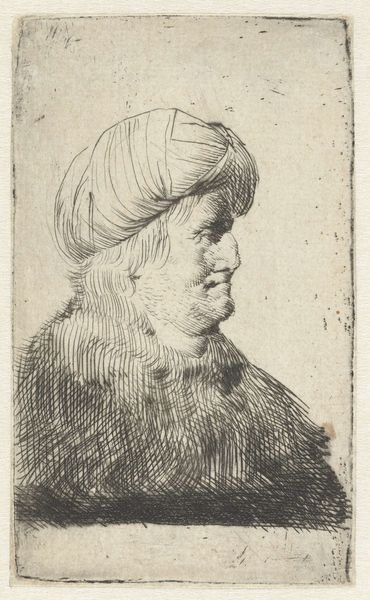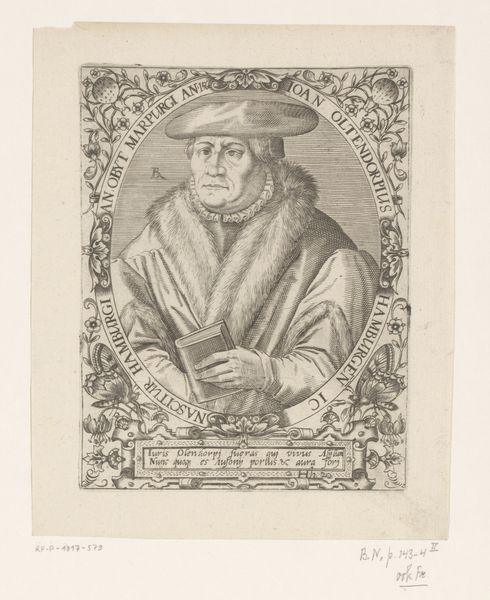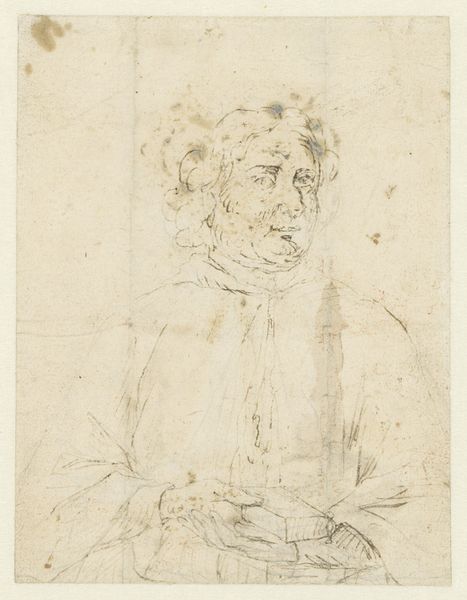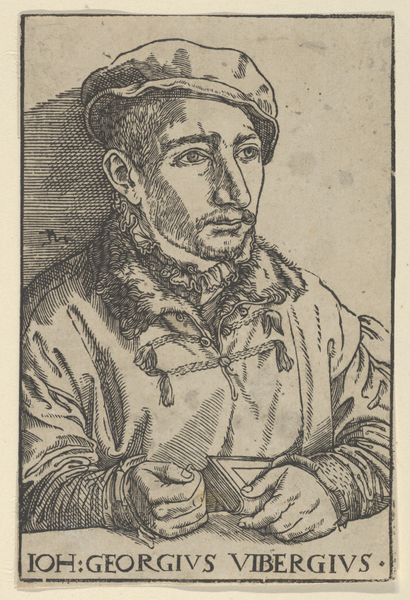
drawing, paper, pencil, graphite, charcoal
#
portrait
#
drawing
#
charcoal drawing
#
paper
#
11_renaissance
#
pencil drawing
#
pencil
#
graphite
#
portrait drawing
#
charcoal
#
italian-renaissance
Dimensions: height 387 mm, width 253 mm
Copyright: Rijks Museum: Open Domain
Editor: Here we have, "Portrait of Thomas Aquinas" made sometime between 1480 and 1523 by Timoteo Viti. It's rendered in pencil and charcoal on paper and has such a softness to it, despite being a study of someone who looks quite important. What's your take? Curator: My first impulse is to consider the socioeconomic impact of paper in the late 15th and early 16th centuries. Pencil and charcoal are relatively accessible materials, which speaks to a practice rooted in observation and skill-building. How might this preparatory sketch shed light on workshop practices of the time? Was this made for later engravings? Editor: I hadn’t thought about that – the social implications of access to materials. Curator: Indeed! What does the work suggest about the economics of art production during the Italian Renaissance? Was Viti using readily available material, therefore making the artwork cheap to create, and widely available? Think about the role of drawings within larger systems of artistic production. Consider the artist's labour versus the commissioner's gain. Editor: So it's less about *who* is depicted, and more about *how* and with *what* this was made? Thinking about it, those tightly knit pencil lines might have also acted as the initial mode to test the engraver's burin technique to distribute wealth through a range of engravings on printing press machines... Curator: Precisely! That subtle modeling achieved with those lines—is that about personal expression, or mastering the materials and skills of the workshop? That needs a deep study on materiality! Editor: Wow. That really gives me something to think about! Thanks! Curator: You're welcome. I’m glad you found the material context insightful.
Comments
No comments
Be the first to comment and join the conversation on the ultimate creative platform.

